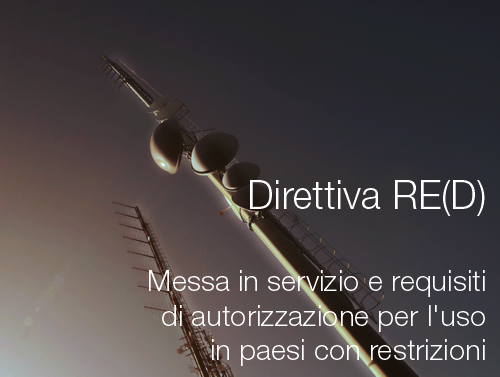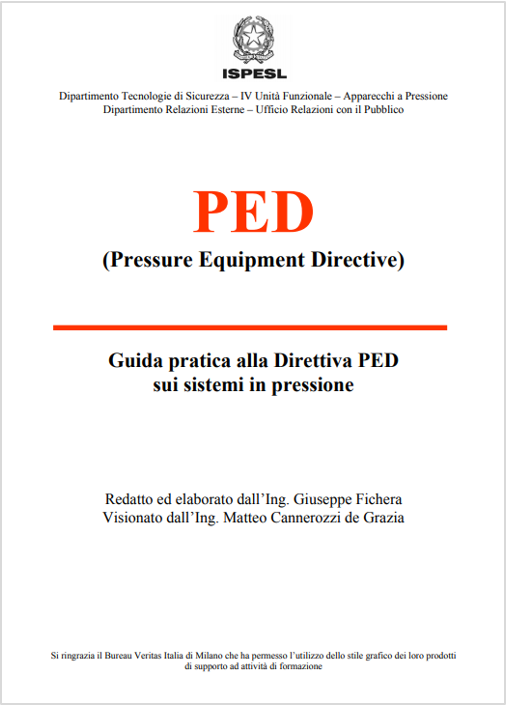Informazione tecnica HSE / 25 ° anno
/ Documenti disponibili:
45.645
/ Documenti scaricati: 34.677.005
/ Documenti scaricati: 34.677.005
ID 16559 | 04.05.2022
The New Approach to technical harmonisation and standards was adopted in May 1985 with the aim of preventing divergent EU product legislation. It established a common regulatory toolbox and an approach to legislative harmonisation based on the principles of essential safety requirements and technological neutrality.
To strengthen the New Approach, the EU adopted the New Legislative Framework (NLF) in 2008. The NLF aims to provide a horizontal legal framework to support the development and implementation of EU product legislation, and comprises the following pieces of legislation:
- Decision No 768/2008/EC on a common framework for the marketing of products, which provides a horizontal approach to aligning EU product legislation with a set of common principles and reference provisions.
- Regulation (EC) No 765/2008 setting out the requirements for accreditation and market surveillance of products, which stipulates rules for the accreditation of conformity assessment bodies and the general principles of the CE marking regime.
- Regulation (EU) 2019/1020 on market surveillance and compliance of products, which has been in application since 16th July 2021 and aims to improve market surveillance and compliance with product legislation. As detailed below, the market surveillance aspects of the NLF are not covered by this evaluation study, as they were evaluated in 2017 and amended through this Regulation.
The Centre for Strategy & Evaluation Services (CSES) and its partner CSIL were commissioned to conduct the ‘Supporting Study for the evaluation of certain aspects of the New Legislative Framework (Decision No 768/2008/EC and Regulation (EC) No 765/2008)’.
This document presents the final report of this study. First, this report presents the objectives and scope of the study, before providing detailed information on the background and context to the evaluation, including an analysis of the NLF’s intervention logic and implementation to date. On this basis, the report provides an assessment of the key evaluation issues across all evaluation criteria.
Study scope
Regarding the material scope, the evaluation will need to conduct an evidence-based review of the performance of the NLF in the following key areas:
- Alignment of Union harmonisation legislation to the NLF’s common principles and reference provisions.
- Conformity assessment rules and procedures.
- Framework and rules for the accreditation and notification of conformity assessment and notified bodies.
- CE marking and administrative requirements.
The assessment of these issues will feed into the overall assessments of the five core evaluation criteria named above. Beyond the retrospective examination of the NLF’s provisions and outputs, various issues relating to the NLF’s ongoing fitness for purpose will be investigated under the relevance criterion. More specifically, the evaluation will consider the extent to which the NLF has been and continues to be able to accommodate the following developments in product markets and in manufacturing processes:
- Ability of products to change after they have been placed on the market, for instance due to software, firmware or hardware updates and upgrades, or through the continuous learning capabilities of machine learning systems.
- Increasing digitalisation and complexity of products, illustrated by the development of the Internet of Things (IoT). Among other issues, the integration of internet connectivity into many products raises considerations regarding how far the horizontal legal framework needs to be updated to integrate cybersecurity, and the linkages between product safety and security.
- Changes in manufacturing value chains and the emergence of alternative means of production (e.g. 3-D printing) resulting in the blurring of delineations between economic operators, as well as between products and services.
- Circular economy developments, including increasing focus on placing products on the market following their repair, refurbishment, and remanufacturing.
This assessment of fitness for purpose is particularly pertinent considering ongoing EU policy and legislative developments related to both the digital and green transitions. Examples include:
The geographic scope of the evaluation will be the EU-27 Member States and the 3 EEA-EFTA Members (Norway, Iceland and Liechtenstein). In addition, limited international benchmarking has be undertaken to consider how selected third countries tackle specific issues examined through the evaluation.
The temporal scope will span the period 2014-2020. Although the NLF was adopted in 2008, this timeframe is relevant, as it complements an earlier evaluation from 20148 and considers that most of the legislation aligned with the NLF to date was recast and aligned in or after 2014. Only a few pieces of legislation were aligned before 2014.
__________
Contents
1. Introduction
1.1 Evaluation study objectives
1.2 Study scope
1.3 Methodological overview
1.4 Report structure
2. What was the expected outcome of the NLF?
2.1 EU legal and policy context
2.2 Needs and problems
2.3 General and specific objectives
2.4 Implementation mechanisms, tools and activities
2.5 Outputs, results, and impacts
3. How has the situation evolved over the evaluation period?
3.1 Implementation of the NLF
3.2 Market developments and trends impacting the NLF
3.3 Regulatory developments impacting the NLF
4. To what extent was the NLF successful and why?
4.1 Effectiveness
4.2 Efficiency
4.3 Coherence
4.4 Conclusions
5. How did the NLF make a difference?
5.1 Conclusions – added value
6. Is the NLF still relevant?
6.1 Relevance of the original needs, objectives and provisions of the NLF
6.2 Review of whether there are any definitions missing in the NLF
6.3 Impact of technological, scientific, environmental, and social developments on the relevance of the NLF
6.4 Analysis of the need for a crisis instrument in the NLF
6.5 Conclusions
7. Conclusions and lessons learned
7.1 To what extent was the NLF successful and why?
7.2 How did the NLF make a difference?
7.3 Is the NLF still relevant?
7.4 Lessons learned
Annex 1: Bibliography
Annex 2: Evaluation methodology
Overview of the key evaluation issues
Methodological approach
Conceptual evaluation challenges
Evaluation matrix
Annex 3: Overview of benefits and costs
Annex 4: Case studies
Case study 1: Coherence of non-aligned Union harmonisation legislation with NLF-aligned legislation
Case study 2: Accreditation process
Case study 3: Assessment of NLF-related costs and benefits under certain NLF-aligned legislation (EMCD)
Case study 4: Assessment of NLF-related costs and benefits under certain NLF-aligned legislation (Toy Safety Directive)
Annex 5: International accreditation standards
Annex 6: Analysis of Safety Gate data
Methodological considerations
Analysis of all NLF-related alerts
Disaggregated analysis by NLF-aligned law
Annex 7: Mapping of NLF-aligned legislation
Tables
Table 1-1: Summary of key evaluation questions and report location
Table 2-1: Regulatory framework underpinning the NLF
Table 3-1: Summary of harmonised EU product legislation aligned with the NLF
Table 3-2: Overview of peer evaluations conducted in 2015-2020 21
Table 3-3: Total number of accreditations across all EA members in 2020, by type
Table 4-1: Varying interpretations of the concept of accreditation
Table 4-2: Example: Impact of different requirements across NLF-aligned legislation
Table 4-3: Summary of the conformity assessment modules under the NLF
Table 4-4: Summary of rules on accreditation and notification in the NLF
Table 4-5: Main costs and benefits identified by evaluations of certain NLF-aligned EU product legislation
Table 4-6: Evolution of number of notified bodies over time, by piece of legislation (2008-2020)
Table 4-7: Summary of results from the survey on the use of remote assessment techniques
Table 4-8: Coherence of the NLF with new legislative proposals
Table 6-1: Overview of needs related to legal inconsistency and incoherence
Table 6-2: Overview of needs related to conformity assessment and notified bodies
Table 6-3: Overview of needs related to the CE marking
Table 6-4: Overview of key economic roles related to the circular economy
Table 6-5: Role of the NLF in the COVID-19 pandemic
Figures
Figure 1-1: Overview of work plan for the evaluation study
Figure 2-1: Intervention logic for the New Legislative Framework (NLF)
Figure 3-1: Number of notifications of CABs per Member State
Figure 4-1: Performance of the NLF in relation to its specific objectives (N=95)
Figure 4-2: Overall effectiveness of the NLF in facilitating the consistency and coherence of different EU harmonisation legislation for products (Question 15, N=210)
Figure 4-3: Problems experienced because of divergent requirements between one or more pieces of EU product legislation (Question 16, N=50)
Figure 4-4: Fitness for purpose of the suite of conformity assessment modules under the NLF (Question 20, N=151)
Figure 4-5: Use of notified bodies/ conformity assessment bodies by economic operators and industry associations (Question 7, N=82)
Figure 4-6: Clarity and trustworthiness of CE marking (N=125)
Figure 4-7: Stakeholder perceptions on the impact of the NLF (N=92 to 94)
Figure 4-8: Overall effectiveness of the NLF in achieving its objectives (Question 10, N=156)
Figure 4-9: Annual budget of national accreditation bodies in selected EU Member States (Euro, 2013-2020)
Figure 4-10: Annual staff size (not including assessors) of national accreditation bodies in selected EU Member States (Staff members, 2013-2020)
Figure 4-11: Scale of the most important costs stemming from the conformity assessment procedure established by the NLF (Question 40, N=56)
Figure 4-12: Scale of the burden resulting from the introduction of the accreditation framework for conformity assessment bodies (Question 42, N=111)
Figure 4-13: Extent to which the NLF increased the overall efficiency of Union product legislation through simplification and burden reduction (Question 46, N=55)
Figure 4-14: Necessity and appropriateness of NLF general information obligations addressed to consumers (Question 33, N=84)
Figure 4-15: Scale of the burden deriving from communication obligations (Question 35, N=47)
Figure 4-16: Extent to which the digitalisation of CE marking / traceability / product information would jeopardise the right of consumers to be duly informed (Question 37, N=83)
Figure 4-17: Responses to the question: How do you rate your overall experience with remote assessment techniques? (N=91)
Figure 4-18: Overall balance of NLF benefits and costs – Public consultation (N=95)
Figure 4-19: Overall balance of NLF benefits and costs (disaggregated by stakeholder type, N=95)
Figure 4-20: Extent to which there are inconsistencies, overlaps or gaps between the different provisions of the NLF (Question 59, N=193)
Figure 5-1: Added value of the NLF’s common legal framework compared to what could have been achieved through the development of product legislation in the absence of the NLF (Question 63, N=190)
Figure 5-2: Extent to which the needs and challenges addressed by the NLF’s common legal framework still require (harmonisation) action at the EU level (Question 64, N=190)
Figure 6-1: Extent to which the needs and problems that the NLF was originally designed to address remain relevant (Question 51, N=200)
Figure 6-2: Ongoing relevance of the objectives of the EU legal framework for products (N=95)
Figure 6-3: Extent to which the NLF is able to accommodate key trends related to digitalisation and the integration of new technologies in products (Question 53, N=198)
Figure 6-4: Extent to which the current conformity assessment modules are adapted to the latest manufacturing practices (Question 56, N=70)
Figure 6-5: Ability of the NLF to accommodate key circular economy trends (Question 54, N=198) 137
Figure 6-6: Extent to which it took products that were instrumental in the fight against COVID-19 too long to be placed on the market (Question 57, N=117)
Figure 6-7: Extent to which elements of the NLF remain clear and appropriate (Question 52, N=200)
...
Fonte: EC
Collegati
Rettifica del regolamento (UE) 2020/740 del Parlamento europeo e del Consiglio del 25 maggio 2020 sull’etichettatura dei pneumatici in relazione al ...

della Commissione del 20 luglio 2017 che specifica le modalità di presentazione delle informazioni di cui all'articolo 10, paragrafo 10, della direttiva 2014/53...

Guida pratica alla Direttiva PED sui sistemi in pressione
Fonte ISPESL 2003
Dipartimento tecnologie di Sicurezza - IV Unità Funzionale - Apparecchi a Pressione
Ing. G. Fiche...
Testata editoriale iscritta al n. 22/2024 del registro periodici della cancelleria del Tribunale di Perugia in data 19.11.2024